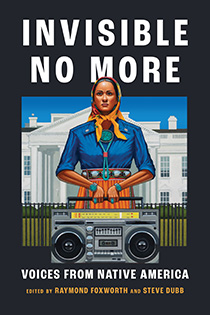"Invisible No More reminds us about the abundance of knowledge, power, and leadership in Indigenous communities across this country—past, present, and future. The solutions and constructivism are a gift to the world; it is imperative that we listen."
Nichole June Maher, CEO, Inatai Foundation
"The voices in this collection of Indigenous peoples are the manifestation of our ancestors’ prayers realized. Their actions and intent come from the most sacred calling—being of service to our people. These authors are the Ogimaag (Chiefs) of our modern age."
Chrystel Cornelius (Ojibwa-Oneida), President and CEO, Oweesta Corporation
"Invisible No More weaves together traditions of reciprocity and commitments to community organizing that shift power to the original protectors of land and water. These critical writings connect gender and land-based violence, philanthropy and exploitation, and sovereignty and stewardship, while protecting language, land, and loved ones."
Carmen Rojas, President and CEO, Marguerite Casey Foundation
"These writings are an opportunity to reset relationships between mainstream environmental organizations—often white dominated—and Native communities. Invisible No More will be indispensable in the struggle against social injustice, climate change, and environmental degradation."
Ramón J. Cruz, former President, Sierra Club

